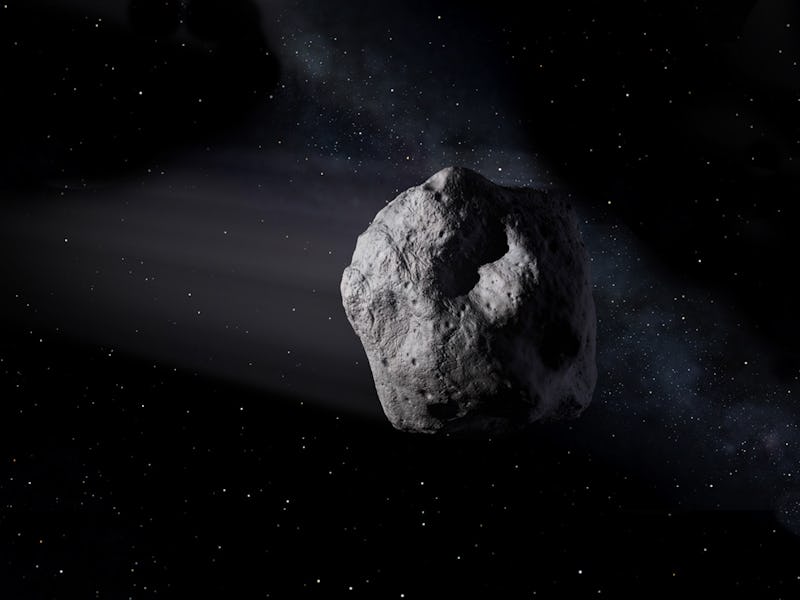Asteroid the size of a school bus to fly by Earth closer than satellites
Thankfully, there's no chance of impact.

On Thursday, September 24, a small asteroid will make a tour of our planetary neighborhood, flying by Earth at a cosmically close distance just 13,000 miles away.
But there's no need to panic. This school bus-sized space rock is not on a direct collision course with Earth, and even if it were, it wouldn't make it to the planet's surface one piece.
The NASA-funded Catalina Sky Survey in Arizona discovered the asteroid on September 18. Further observations determined its approximate size and trajectory, quickly ruling out any risk to us Earthlings.
The asteroid has been dubbed 2020 SW. It stretches across 15 to 30 feet long — about the same size as a yellow school bus, according to NASA. But astronomers can only estimate how large the asteroid is based on its brightness, and have not been able to measure it directly.
Asteroid 2020 SW is not on an impact trajectory with Earth. And even if it were headed towards our planet, the asteroid is so small that it would disintegrate once it hits Earth's atmosphere, becoming a 'fireball' in the sky, or a bright meteor.
This animation shows the asteroid's trajectory as it passes by Earth on Thursday.
Asteroid 2020 SW will make its closest approach at 7:12 a.m. EDT on September 24 over the Southeastern Pacific Ocean.
Although it will be a brief rendezvous, the asteroid's flyby of Earth will alter its course through our Solar System due to the planet's gravitational force. After it passes by, the asteroid will continue its journey around the Sun, and is expected to pass by Earth again in the year 2041, but it will be much further away.
"There are a large number of tiny asteroids like this one, and several of them approach our planet as close as this several times every year," Paul Chodas, director of the Center for Near-Earth Object Studies (CNEOS) at NASA's Jet Propulsion Laboratory in Southern California, said in a statement. "In fact, asteroids of this size impact our atmosphere at an average rate of about once every year or two."
There are over 20,000 known near-Earth asteroids and most of them pose no threat to Earth. But NASA still keeps a close watch on these flying rocks through the space agency's planetary defense organization.
NASA is more wary of larger asteroids — ones that are about 460 feet or larger — which could actually cause some real damage. These city block-sized behemoths are a lot brighter than their smaller kindred, so they can be detected much earlier by our instruments than the smaller ones.
There may be over 100 million small asteroids like 2020 SW, but they are hard to detect unless they fly by really closely to the Earth, according to NASA.
"The detection capabilities of NASA's asteroid surveys are continually improving, and we should now expect to find asteroids of this size a couple days before they come near our planet," Chodas said.